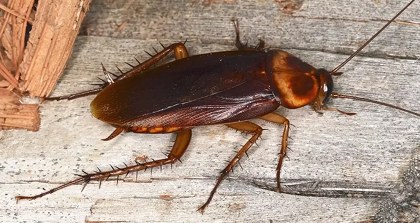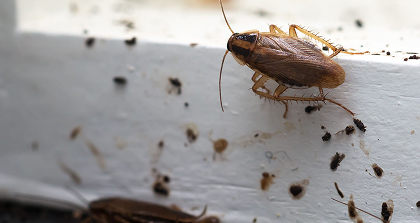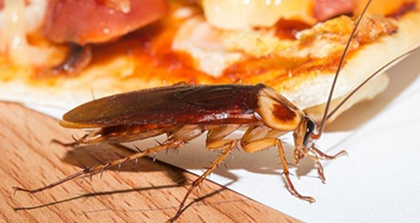Cockroach Control Services in Orange County, CA
At Wipe Out Pest Control, we specialize in cockroach extermination services throughout Orange County, including Placentia, Anaheim, Fullerton, Yorba Linda, and Huntington Beach. Whether you’re dealing with German cockroaches in your kitchen or American roaches in your garage, our team uses proven, family-safe treatments to eliminate infestations and prevent future problems. We proudly serve both residential and commercial properties.
Common Types of Roaches in California

American

German

Oriental
Effective Roach Treatments
The initial step in professional roach treatments always begins with a thorough inspection to properly identify the type of roach species present and all harborage areas. The type of treatment used depends on the roach species, severity of the infestation, location of harborage areas, and customer preferences. At Wipe Out Pest Control, we employ a range of treatment types, either individually or in combination, to address cockroach infestations effectively. Some of these treatment types include:
- Insect Monitoring Devices
- Baits
- Residual Insecticides
- Dusts
- IGR’s (Insect Growth Regulators)
- Fogging

How to prevent Roach Infestations
Cleanliness
Roaches require minimal food to survive, making it crucial to keep areas with food residue clean to prevent infestations or manage existing ones. Here are some steps you can take to maintain cleanliness in your home.
- Promptly wash and put away dishes after use.
- Keep the sink clear of food scraps or other residual.
- Wipe up spills and crumbs as soon as they occur.
- Wipe down countertops to remove food residual and spills.
- Wipe down the stovetop after each use to remove grease, oils, or other residual.
- Regularly clean the oven, microwave, and refrigerator to remove food residual and spills.
- Dispose of garbage promptly and keep trash cans clean.
Moisture Control
Roaches depend on moisture and humidity not just for survival, but for optimal growth and reproduction. In humid conditions, the roach life cycle accelerates, leading to higher roach populations. Here are some steps you can take to manage moisture in and around your home.
Ventilation
Ensure proper ventilation in your home by using exhaust fans in bathrooms and kitchens. Open windows and doors when weather permits to promote airflow and reduce humidity levels.
Use a dehumidifier
Invest in a dehumidifier to remove excess moisture from the air, particularly in areas prone to high humidity such as basements, bathrooms, and laundry rooms.
Fix leaks
Repair any leaks in plumbing fixtures, pipes, or appliances to prevent water accumulation and subsequent humidity increase.
Air conditioning
Use air conditioning to help control humidity levels, as it not only cools but also dehumidifies the air.
Monitor indoor plants
Overwatering indoor plants can contribute to indoor humidity. Be mindful of watering habits and ensure proper drainage to prevent excess moisture buildup.
Food Storage
Proper food storage is an essential component of roach prevention and control. By denying roaches access to food sources and minimizing their attraction to your home, you can significantly reduce the risk of infestation and maintain a healthier living environment. Here are some tips and tricks for food storage:
Seasonal Use Airtight Containers
Store dry goods such as grains, cereals, flour, sugar, pasta, and snacks in airtight containers to prevent roaches from accessing them. Make sure containers have tight-fitting lids to seal out pests.
Store perishables in the refrigerator
Refrigerate perishable items such as dairy products, meats, fruits, and vegetables to extend their shelf life and deter pests.
Store pet food properly
Keep pet food in sealed containers and avoid leaving it out overnight. Clean pet food bowls regularly and store them in a dry, clean area.
Rotate stock
Practice the "first in, first out" method to ensure that older food items are used before newer ones. This helps prevent food waste and ensures that stored items remain fresh.
Organize pantry and cabinets
Keep your pantry and cabinets well-organized to easily spot and access food items. It is important to regularly check for expired or stale food and dispose of them promptly.
Call Us Now to Schedule an Inspection
Seasonal Use Airtight Containers
Store dry goods such as grains, cereals, flour, sugar, pasta, and snacks in airtight containers to prevent roaches from accessing them. Make sure containers have tight-fitting lids to seal out pests.
Store perishables in the refrigerator
Refrigerate perishable items such as dairy products, meats, fruits, and vegetables to extend their shelf life and deter pests.
Store pet food properly
Keep pet food in sealed containers and avoid leaving it out overnight. Clean pet food bowls regularly and store them in a dry, clean area.
Rotate stock
Practice the "first in, first out" method to ensure that older food items are used before newer ones. This helps prevent food waste and ensures that stored items remain fresh.
Organize pantry and cabinets
Keep your pantry and cabinets well-organized to easily spot and access food items. It is important to regularly check for expired or stale food and dispose of them promptly.
Call Us Now to Schedule an Inspection
FAQS
What types of roaches are common in Orange County?
The most common cockroach species in Orange County include German, American, and Oriental roaches. Each species requires a tailored treatment approach.
Are your cockroach treatments safe for kids and pets?
Yes, we use eco-conscious and family-safe treatment options whenever possible.
How long does a typical cockroach treatment take?
Treatment duration depends on the severity of the infestation, but most homes are treated within 1–2 hours, with follow-ups if needed.
Can you help with roaches in restaurants or commercial kitchens?
Absolutely! We offer discreet and effective commercial roach control services tailored to businesses in compliance with health regulations.
our services
Simple Solutions To Complex Problems at an Affordable Rate

Residential
We offer a variety of plans custom fit for your needs! Whether its an endless trail of ants, or strange noises in the walls, we’ve got your pest control needs covered!

Commercial
We can stop pests from causing costly machinery repairs, fines, closures, and damage to your reputation!

rodents
Various species of rats and mice inhabit the Orange County area. Remove rodents from your home permanently with our exclusion services.

mosquito
We use the In2Care system to eliminate mosquitoes where they breed—protecting your family’s health and comfort.

